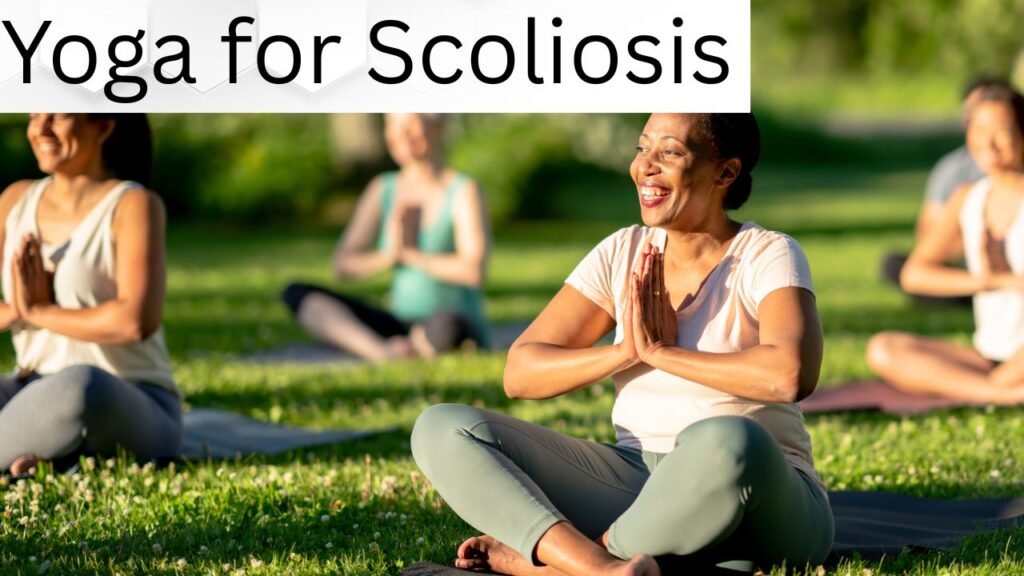Scoliosis is a condition where the spine curves abnormally, leading to discomfort, postural imbalances, and sometimes pain. While severe cases may require medical intervention, mild to moderate scoliosis can often be managed naturally. Yoga offers a safe, effective way to strengthen muscles, enhance flexibility, and promote spinal alignment. By practicing targeted yoga poses, you can support your spine and reduce discomfort over time.

How Yoga Helps with Scoliosis
Yoga improves posture by stretching tight muscles and strengthening weaker ones. Since scoliosis causes asymmetrical muscle imbalances, yoga helps restore balance. It also enhances body awareness, making it easier to correct posture in daily activities. Additionally, deep breathing techniques in yoga improve lung capacity, which can be compromised by severe spinal curves.
Best Yoga Poses for Scoliosis
1. Cat-Cow Stretch (Marjaryasana-Bitilasana)
This dynamic movement increases flexibility and improves spinal mobility.
How to do it:
- Start on hands and knees in a tabletop position.
- Inhale, arch your back, and lift your head and tailbone (Cow Pose).
- Exhale, round your spine, tucking your chin and pelvis (Cat Pose).
- Repeat for 10 rounds, moving fluidly with your breath.
2. Extended Triangle Pose (Utthita Trikonasana)
Triangle pose stretches the spine and helps correct imbalances by lengthening the sides of the body.
How to do it:
- Stand with your feet wide apart.
- Turn your right foot out 90 degrees and left foot slightly inward.
- Extend your arms at shoulder height, then reach your right hand toward your right foot.
- Place your hand on your shin or a block and extend your left arm toward the ceiling.
- Hold for 30 seconds, then switch sides.
3. Side Plank (Vasisthasana)
This pose strengthens the core and improves spinal stability, especially for asymmetrical curves.
How to do it:
- Start in a high plank.
- Shift your weight onto your right hand and outer right foot, stacking your left foot on top.
- Raise your left arm toward the sky and keep your body in a straight line.
- Hold for 20-30 seconds, then switch sides.
4. Child’s Pose (Balasana)
A gentle stretch that releases tension in the lower back and lengthens the spine.
How to do it:
- Kneel with your big toes touching and knees apart.
- Lower your torso forward, stretching your arms out in front.
- Rest your forehead on the mat and breathe deeply.
- Hold for 1-2 minutes.
5. Cobra Pose (Bhujangasana)
This backbend strengthens the spine and promotes better posture.
How to do it:
- Lie on your stomach with your hands under your shoulders.
- Inhale, lift your chest off the ground, keeping elbows slightly bent.
- Keep your shoulders relaxed and gaze forward.
- Hold for 20-30 seconds, then lower back down.
6. Seated Twist (Ardha Matsyendrasana)
Twisting poses help lengthen and realign the spine.
How to do it:
- Sit with your legs extended.
- Bend your right knee and cross it over your left leg, placing your foot flat on the floor.
- Place your right hand behind you and your left elbow on your right knee.
- Twist your torso gently to the right.
- Hold for 30 seconds, then switch sides.
7. Legs Up the Wall (Viparita Karani)
This restorative pose reduces tension in the lower back and enhances circulation.
How to do it:
- Sit sideways against a wall and swing your legs up while lying on your back.
- Rest your arms by your sides and relax.
- Hold for 5-10 minutes.
Tips for Practicing Yoga with Scoliosis
- Focus on alignment: Use mirrors or a yoga instructor to ensure correct positioning.
- Modify as needed: Props like blocks and straps help provide support and maintain balance.
- Balance both sides: Spend extra time on the weaker side to create symmetry.
- Breathe deeply: Controlled breathing helps relax tight muscles and enhance flexibility.
- Be consistent: Regular practice yields the best results in improving posture and reducing discomfort.
Final Thoughts
Yoga is a powerful tool for managing scoliosis and improving spinal alignment. With consistent practice, these poses can help you build strength, increase flexibility, and reduce discomfort. Always listen to your body and modify poses as needed. If you experience pain, consult a healthcare professional before continuing your practice. Start your yoga journey today and take the first step toward better spinal health!